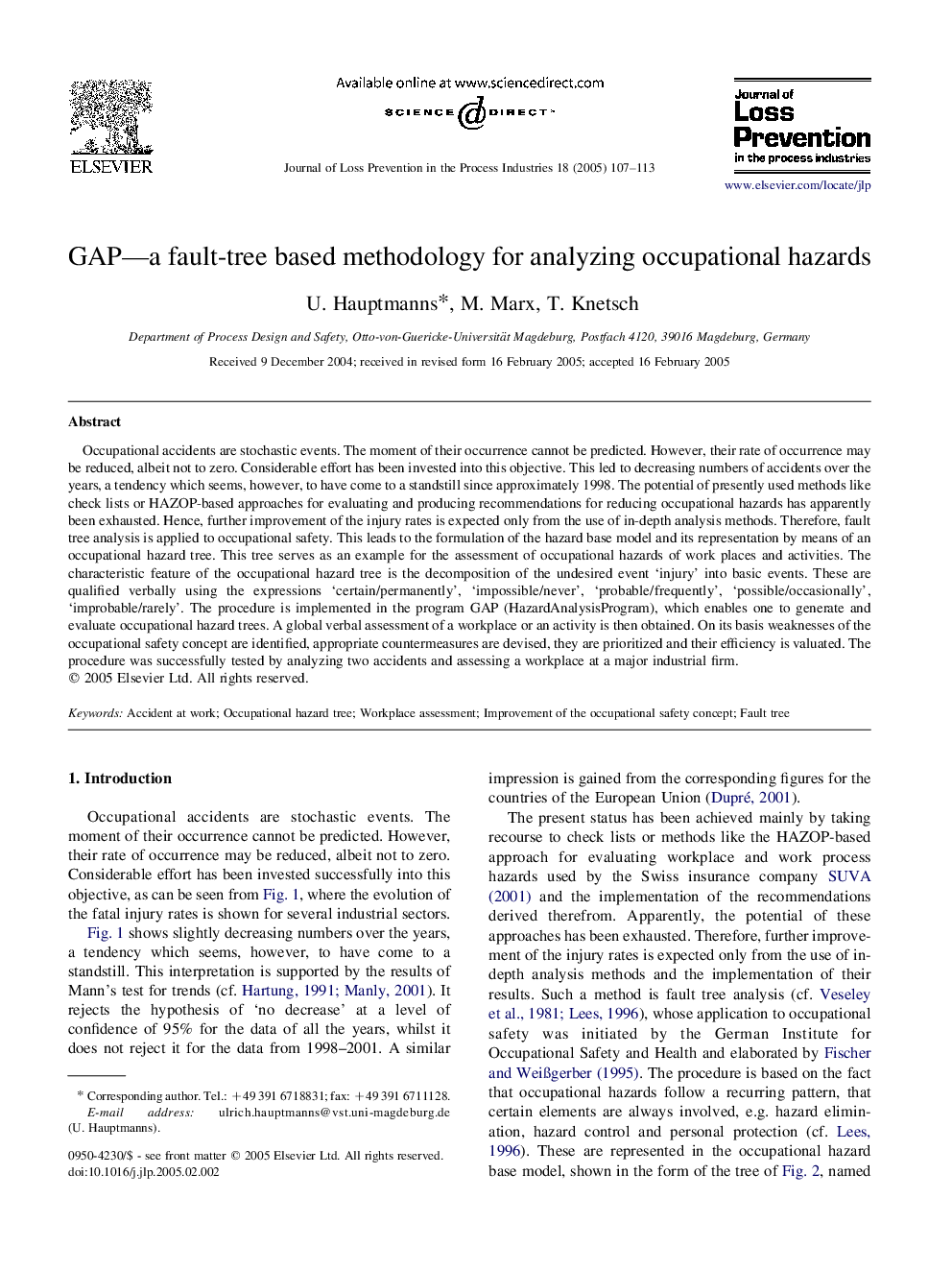| Article ID | Journal | Published Year | Pages | File Type |
|---|---|---|---|---|
| 10373230 | Journal of Loss Prevention in the Process Industries | 2005 | 7 Pages |
Abstract
Occupational accidents are stochastic events. The moment of their occurrence cannot be predicted. However, their rate of occurrence may be reduced, albeit not to zero. Considerable effort has been invested into this objective. This led to decreasing numbers of accidents over the years, a tendency which seems, however, to have come to a standstill since approximately 1998. The potential of presently used methods like check lists or HAZOP-based approaches for evaluating and producing recommendations for reducing occupational hazards has apparently been exhausted. Hence, further improvement of the injury rates is expected only from the use of in-depth analysis methods. Therefore, fault tree analysis is applied to occupational safety. This leads to the formulation of the hazard base model and its representation by means of an occupational hazard tree. This tree serves as an example for the assessment of occupational hazards of work places and activities. The characteristic feature of the occupational hazard tree is the decomposition of the undesired event 'injury' into basic events. These are qualified verbally using the expressions 'certain/permanently', 'impossible/never', 'probable/frequently', 'possible/occasionally', 'improbable/rarely'. The procedure is implemented in the program GAP (HazardAnalysisProgram), which enables one to generate and evaluate occupational hazard trees. A global verbal assessment of a workplace or an activity is then obtained. On its basis weaknesses of the occupational safety concept are identified, appropriate countermeasures are devised, they are prioritized and their efficiency is valuated. The procedure was successfully tested by analyzing two accidents and assessing a workplace at a major industrial firm.
Keywords
Related Topics
Physical Sciences and Engineering
Chemical Engineering
Chemical Health and Safety
Authors
U. Hauptmanns, M. Marx, T. Knetsch,
